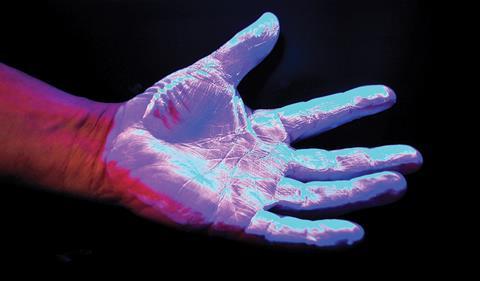At a time when many believe the issue of hand hygiene has been fixed, much work remains to be done to embed robust systems in UK healthcare, says Jennifer Trueland

Hand hygiene
Read the case studies related to this article here
As the senior nurse in the infection prevention and control team at Salisbury Foundation Trust, Fiona McCarthy is a regular at trust board meetings. It’s important, she says, that board members are aware of their responsibilities towards infection prevention, and also that they are kept up to date with any issues.
“There are always a lot of questions - which means they are reading the report,” she says with a smile. “Having said that, we don’t wait for the trust board to meet - if there are any issues then directors will be informed at once.”
‘It is clear that currently hand hygiene in healthcare is viewed as an important patient safety topic, but action comes in a sporadic way’
Salisbury has a particularly proactive approach to infection control, which includes a frequently updated - and publicly available - hand hygiene policy, which incorporates the WHO “five moments” approach to reducing healthcare-associated infection. These identify key points during care when cleaning the hands is crucial:
- before patient contact;
- before an aseptic task;
- after body fluid exposure risk;
- after patient contact, and
- after contact with patient surroundings.
Salisbury is far from alone in taking on this approach. Earlier this month, on the WHO’s annual global hand hygiene day, some 170 countries participated in events and campaigns to raise the profile of hand hygiene, up from 130 last year.
This growing spread was welcomed by Professor Didier Pittet, external programme lead for the WHO’s first patient safety challenge: Clean Care is Safer Care.
“This year, once again, the global movement catalysed by WHO around hand hygiene in healthcare is showing its amazing vitality,” he said ahead of 5 May.
“Many campaigns have organised activities and celebrations to respond to the WHO’s call to action on hand hygiene monitoring and feedback and patient participation.”
Waning confidence
But is the hand hygiene message truly embedded in UK healthcare systems - or can we do better? According to the Infection Prevention Society, while hand hygiene has come a long way, more needs to be done.
“It is clear that currently hand hygiene in healthcare is viewed as an important patient safety topic, but action comes in a sporadic way,” says president Jules Storr.
“Recently there has been an attitude of ‘the problem has been fixed’, when we know avoidable harm is still being caused by healthcare associated infections, and poor hand hygiene compliance is a significant contributing factor in many of these infections, not to mention the public’s waning confidence in this basic area of healthcare, as seen in the Francis report.”
Taken seriously
England was the first country in the world to have a nationally funded, centrally co-ordinated ongoing campaign on hand hygiene, but this was closed down in 2010.
“What we know is that hand hygiene at the right time, every time can play a key role in preventing harm as well as reducing patient concern. The IPS acknowledges this and supports the continued need for hand hygiene to be taken seriously to achieve its vision that no person is harmed by a preventable infection. Our five-year strategy reflects this.”
Ms Storr believes a multi-faceted approach is needed. “This is about changing behaviour and we know no single strategy works. Success requires sign-up from not just infection preventionists but policy makers, managers and all staff.
“Utilising the expertise of behavioural scientists on how to further enhance safe healthcare delivery is also needed to build on all that has been done to date and to ensure we get the systems and environment right, promote targeted training and education, market the topic in a way that will engage healthcare staff, provide meaningful, rapid feedback on hand hygiene compliance and address the culture - a culture that will ultimately facilitate the prevention of harm through avoidable infections.”
She cites a paper published in the BMJ this month (of which she is a co-author) which also laments the closing of England’s national hand hygiene programme in 2010. )
“Hand hygiene is the most basic of all patient safety interventions,” the paper reads. “Three years after the closure of the Cleanyourhands campaign we still need to ensure that hand hygiene really is an established part of clinical care.”
The authors, led by Sheldon Stone, senior lecturer at the Royal Free Campus of University College London Medical School, describe a group set up to ensure the gains of the campaign are not lost. Made up of members of the Cleanyourhands campaign external reference group, the Independent Alliance of Patients and Health Care Workers for Hand Hygiene it aims to make sure that “a high standard of hygiene, based on the best available evidence, continues to be observed by all healthcare workers”.
It seeks to do this “through working with the agencies that emerge in the newly reconfigured NHS for commissioning, regulation and education”.
There are, however, areas of good practice - such as Salisbury, where the “five moments” methodology is part of a wide-ranging approach to tackling hand hygiene.
“A lot of our education focuses on the five moments, but we also make sure we can audit all aspects,” says Ms McCarthy. “We find it quite applicable in improving compliance in medical staff and in allied health professionals.”
Proactive stance
Engaging staff at all levels is crucial to a successful infection prevention strategy, she says. “We’ve had a lot of support from the trust board and it’s been important to engage staff at a ward level. We’ve also made real efforts to improve hand hygiene in areas like outpatients.”
The IPS would like to see all healthcare organisations, including commissioners, taking a proactive approach - and will continue to work at achieving this, in part as a member of the new hand hygiene alliance.
“Hand hygiene performed at the right time, every time, save lives: fact,” says Ms Storr. “Commitment must be given to ensure that the simple action of cleaning hands is not omitted.”
Read the case studies related to this article here
Return to the supplement main page
Find out more
Salisbury Foundation Trust’s WHO-influenced approach to hygiene control
Return to Catch Me If You Can: an HSJ/NHS Confederation Supplement main page
Phil Spark on the hi-tech HAI buster
The World Health Organisation is calling for healthcare staff and managers across the world to focus on the importance of improving hand hygiene in hospitals through its Save Lives: Clean Your Hands campaign.
For this campaign, WHO is enlisting support from leading global suppliers of infection prevention solutions. Deb Group, creators of the DebMed Group Monitoring System and a range of hand hygiene and sanitising products, are among those signed up.
This campaign calls attention to something that is imperative 365 days a year for healthcare staff - effective hand hygiene behaviour according to the “WHO Five Moments of Hand Hygiene” recommendations. The campaign aims to empower healthcare staff, patients and ultimately all hospital visitors with the knowledge that can help prevent healthcare-associated infections.
To help with this process, individual hospitals and healthcare facilities around the world are encouraged by the WHO to register for the Save Lives: Clean Your Hands campaign and get access to a wide range of resources, including monitoring and feedback tools, self-assessment framework, action plan template and hand hygiene training films.
The WHO resources can also be accessed at www.debgroup.com along with the “Clean Your Hands Pledge” which reinforces the “five moments” to healthcare staff and provides three important reminders to help maintain hand hygiene compliance.
Currently, across the world less than 1 per cent of hospitals abide by the WHO’s “five moments” recommendation, yet at any time more than 1.4 million patients are suffering from healthcare associated infections. However, the WHO reports that after completing a systematic review of 77 peer-reviewed hand hygiene articles published between 1981 and 2008, the baseline hand hygiene compliance rate was only 38.7 per cent.
Real-time feedback
Evaluation and repeated monitoring of practices, knowledge and perceptions are vital components of any successful hand hygiene programme. Through the campaign, the WHO is actively encouraging hospitals to implement sustainable practices and to learn more about innovative electronic systems for the automatic monitoring of hand hygiene compliance.
“These new technologies present numerous advantages and may become the future approach to hand hygiene compliance monitoring when available resources permit, and provided that they can reflect the Five Moments for Hand Hygiene,” the WHO has said.
The DebMed GMS electronically monitors healthcare workers’ hand hygiene events and provides feedback on compliance rates in real time. It is an accurate, cost-effective solution for fighting HAIs and is the only electronic hand hygiene monitoring system that meets the WHO Five Moments recommendation.
Phil Spark is marketing director of Deb UK.



























No comments yet